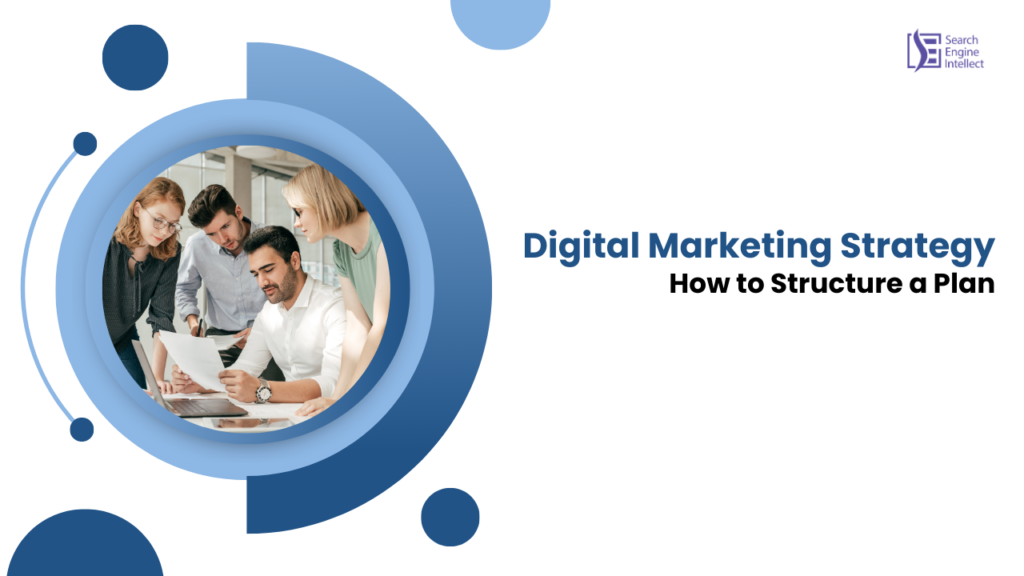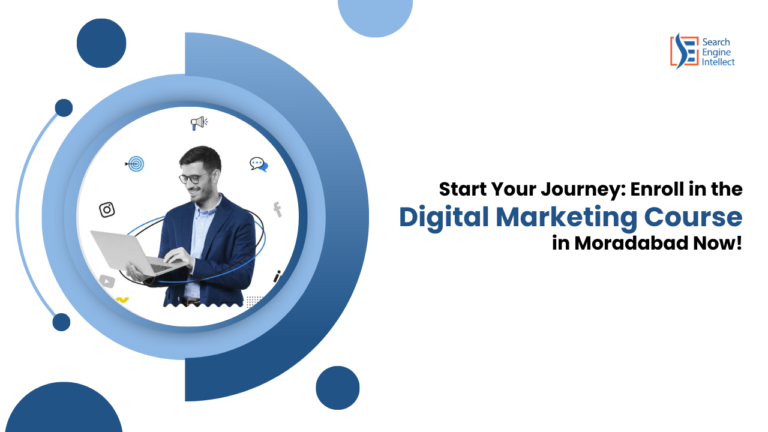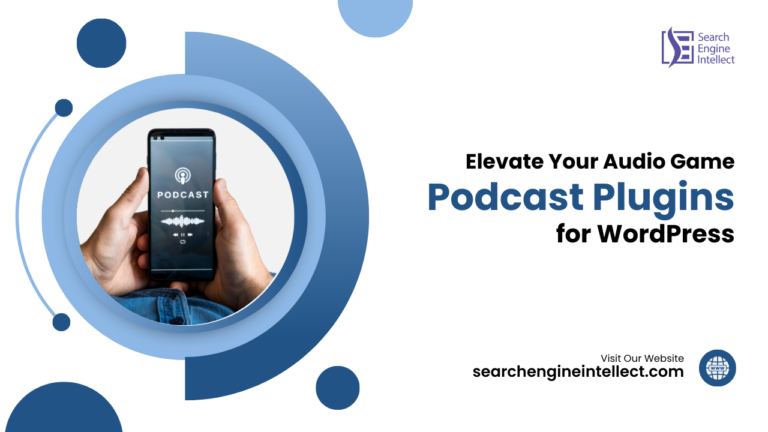Table of Contents
Book a Free Demo Class

Digital Marketing Strategy: How to Structure a Plan for 2024
As we move into 2024, businesses must adapt their digital marketing strategies to stay competitive in an ever-evolving landscape. A well-structured digital marketing plan is essential for achieving business goals, reaching target audiences, and maximizing return on investment (ROI).
This article will guide you through the key components of a successful digital marketing strategy for 2024, incorporating emerging trends and best practices.
Understanding Digital Marketing
Digital marketing encompasses all marketing efforts that use the internet or electronic devices to connect with potential customers. This includes a variety of channels such as search engines, social media, email, and websites. The goal is to promote products or services, engage with customers, and drive conversions.
Steps to Structure Your Digital Marketing Plan for 2024
Setting Clear Objectives
Before diving into the specifics of your digital marketing strategy, it’s crucial to set clear, measurable objectives. These objectives should align with your overall business goals and can include:
- Increasing website traffic by a certain percentage.
- Boosting conversion rates for specific campaigns.
- Growing social media followers or engagement rates.
- Enhancing brand awareness through targeted outreach.
SMART Goals
When setting objectives, consider the SMART criteria:
- Specific: Clearly define what you want to achieve.
- Measurable: Ensure you can track progress and measure success.
- Achievable: Set realistic goals that can be accomplished.
- Relevant: Align goals with broader business objectives.
- Time-bound: Set a deadline for achieving your goals.
Also read: What is Digital Marketing: Everything You Need to Know
Identifying Your Target Audience
Understanding your target audience is essential for crafting effective marketing messages. Consider the following steps:
- Create Buyer Personas: Develop detailed profiles of your ideal customers, including demographics, interests, and pain points.
- Conduct Surveys and Research: Gather insights from existing customers and market research to better understand audience preferences.
- Utilize Analytics: Leverage tools like Google Analytics to analyze website traffic and user behavior, helping you refine your audience targeting.
Conducting Competitive Analysis
Analyzing your competitors can provide valuable insights into their strategies and help you identify opportunities for differentiation. Key steps include:
- Identify Competitors: List your main competitors and analyze their digital marketing efforts.
- Evaluate Their Strategies: Look at their website, content, social media presence, and advertising tactics.
- Identify Strengths and Weaknesses: Determine what they do well and where they fall short, allowing you to capitalize on gaps in the market.
“Ready to develop your digital marketing strategy for 2024? Start implementing these steps today and watch your business thrive in the digital landscape! “
Choosing the Right Digital Marketing Channels
Selecting the appropriate digital marketing channels is crucial for reaching your target audience effectively. Consider the following options:
- Search Engine Optimization (SEO): Improve your website’s visibility in search engine results.
- Content Marketing: Create valuable content that attracts and engages your audience.
- Social Media Marketing: Utilize platforms like Facebook, Instagram, and LinkedIn to connect with customers.
- Email Marketing: Send targeted messages to nurture leads and retain customers.
- Pay-Per-Click (PPC) Advertising: Use paid ads to drive traffic and conversions quickly.
Creating Engaging Content
Content is at the heart of digital marketing. To create engaging content:
- Focus on Quality: Ensure your content is informative, relevant, and valuable to your audience.
- Utilize Various Formats: Experiment with blog posts, videos, infographics, podcasts, and social media posts to cater to different preferences.
- Incorporate Storytelling: Use storytelling techniques to make your content more relatable and engaging.
Also read: Top Career Opportunities After Completing Digital Marketing Course in Bareilly
Implementing SEO Best Practices
SEO is essential for driving organic traffic to your website. Key SEO practices include:
- Keyword Research: Identify relevant keywords that your target audience is searching for.
- On-Page Optimization: Optimize your website’s content, meta tags, and URLs for targeted keywords.
- Technical SEO: Ensure your website is technically sound, with fast loading times and mobile-friendliness.
- Link Building: Acquire high-quality backlinks to improve your website’s authority and ranking.
Utilizing Social Media Marketing
Social media platforms are powerful tools for engaging with your audience and promoting your brand. To effectively utilize social media marketing:
- Choose the Right Platforms: Focus on platforms where your target audience is most active.
- Create a Content Calendar: Plan and schedule your social media posts to maintain consistency.
- Engage with Your Audience: Respond to comments, messages, and mentions to build relationships and foster community.
Leveraging Email Marketing
Email marketing remains one of the most effective digital marketing channels. To maximize its potential:
- Build a Quality Email List: Encourage sign-ups through lead magnets, such as free resources or exclusive offers.
- Segment Your Audience: Divide your email list into segments based on demographics or behavior for targeted messaging.
- Personalize Your Emails: Use personalization techniques to make your emails more relevant and engaging.
Incorporating Paid Advertising
Paid advertising can complement your digital marketing strategy by driving immediate traffic and conversions. Consider the following:
- Set a Budget: Determine how much you are willing to spend on paid advertising.
- Choose the Right Platforms: Select platforms that align with your target audience, such as Google Ads or social media ads.
- Monitor Performance: Track the performance of your ads and adjust your strategy based on results.
Monitoring and Analyzing Performance
Regularly monitoring and analyzing your digital marketing efforts is crucial for success. Key metrics to track include:
- Website Traffic: Use tools like Google Analytics to monitor traffic sources and user behavior.
- Conversion Rates: Measure the percentage of visitors who take desired actions, such as making a purchase or signing up for a newsletter.
- Engagement Metrics: Track likes, shares, comments, and other engagement metrics on social media and content.
Adapting to Trends and Changes
The digital marketing landscape is constantly evolving. To stay ahead, businesses should:
- Stay Informed: Keep up with the latest trends and changes in digital marketing.
- Be Flexible: Be willing to adapt your strategy based on new insights and market shifts.
- Experiment: Test new tactics and channels to discover what works best for your audience.
Top Digital Marketing Strategies for Online Growth
To achieve online growth in 2024, consider implementing the following strategies:
1. Leverage Artificial Intelligence (AI)
Utilize AI tools for personalized marketing, customer segmentation, and predictive analytics to enhance your campaigns.
2. Focus on Short-Form Video Content
Create engaging short-form videos for platforms like TikTok and Instagram Reels to capture audience attention quickly.
3. Optimize for Voice Search
As voice search continues to grow, optimize your content for natural language queries and long-tail keywords.
4. Embrace Multi-Channel Marketing
Integrate various digital marketing channels for a cohesive customer experience and to maximize reach.
5. Enhance Customer Experience
Prioritize customer experience by providing personalized interactions and addressing customer pain points effectively.
Also read: Digital Marketing Salary Trends for 2024 and Beyond
Measuring Success: KPIs and Analytics
To ensure your digital marketing strategy is effective, establish key performance indicators (KPIs) to measure success. Common KPIs include:
- Website Traffic: Monitor the number of visitors to your website.
- Conversion Rates: Track the percentage of visitors who take desired actions (e.g., making a purchase).
- Engagement Metrics: Measure likes, shares, comments, and other interactions on social media.
- Email Open and Click-Through Rates: Analyze how many recipients open your emails and click on links.
Using analytics tools like Google Analytics, you can gain valuable insights into your performance and make data-driven adjustments to your strategy.
Conclusion
Creating a digital marketing strategy for 2024 requires careful planning, research, and execution. By understanding your audience, setting clear objectives, and leveraging various digital marketing channels, businesses can effectively connect with their target audience and achieve their marketing goals. As the digital landscape continues to evolve, staying informed and adaptable will be key to success in the coming year.






